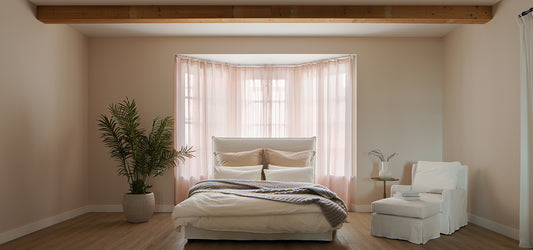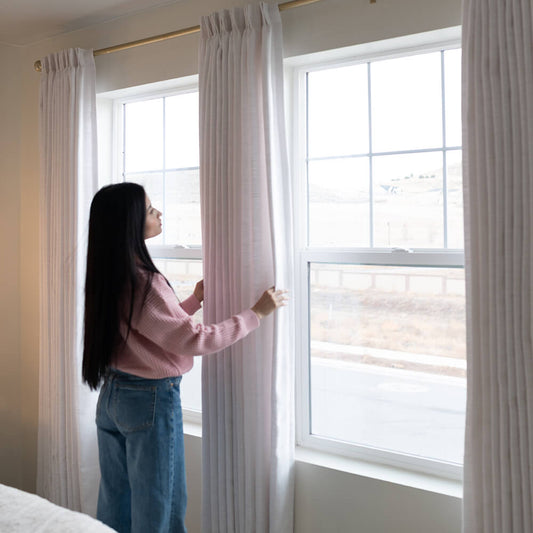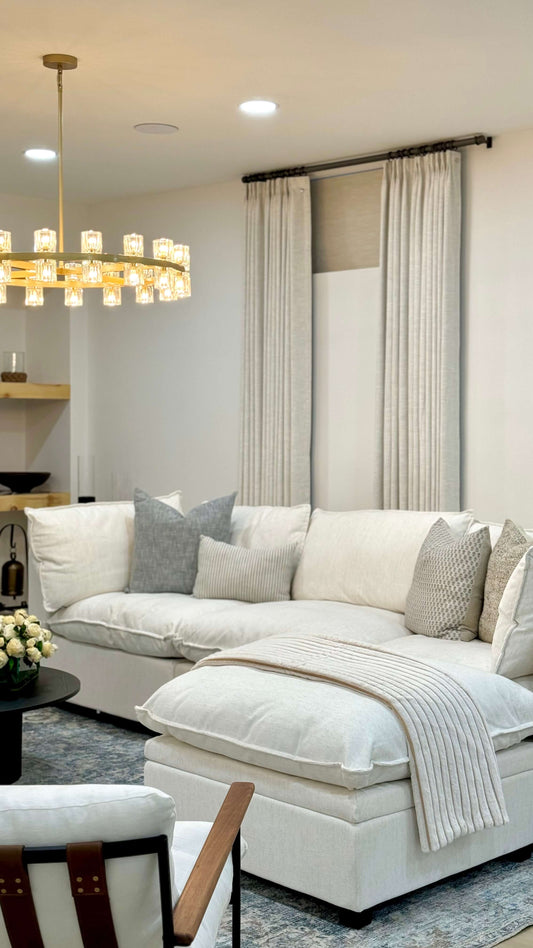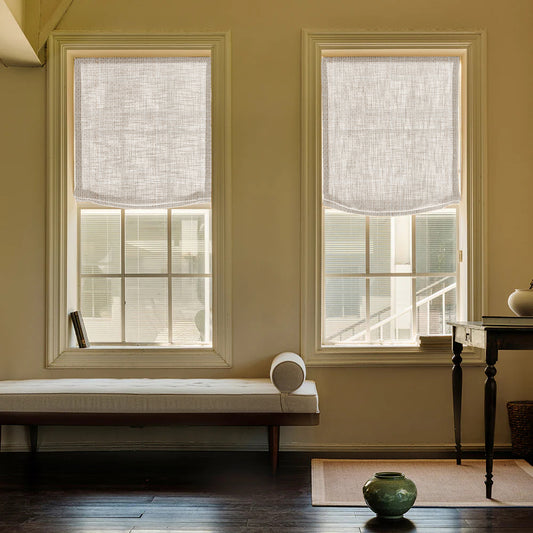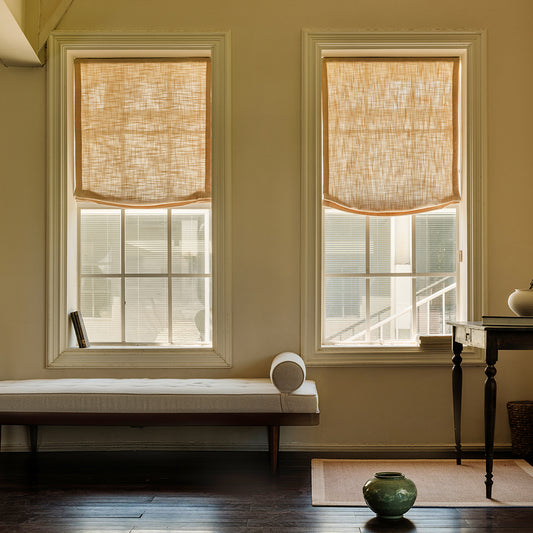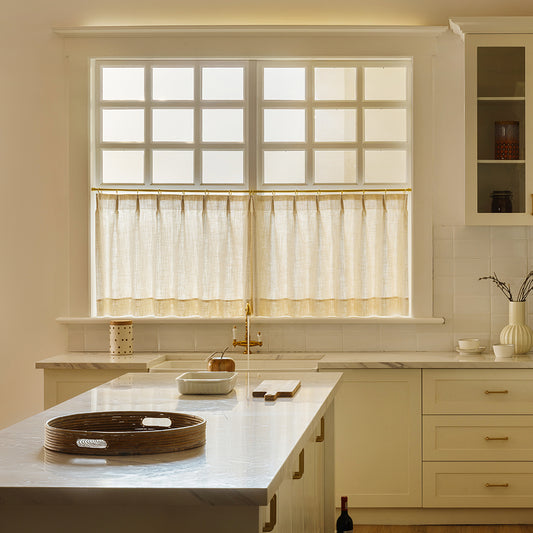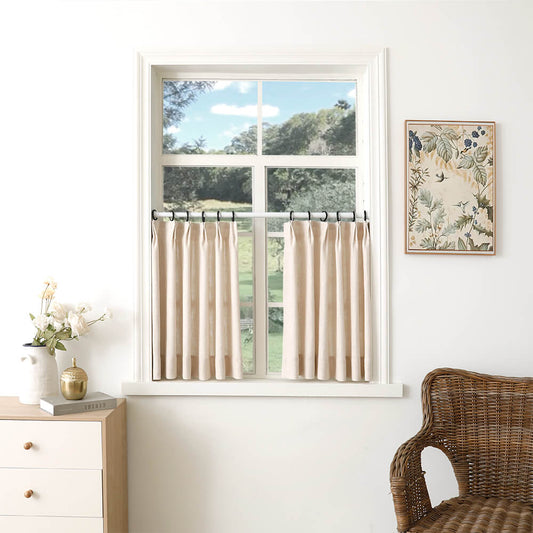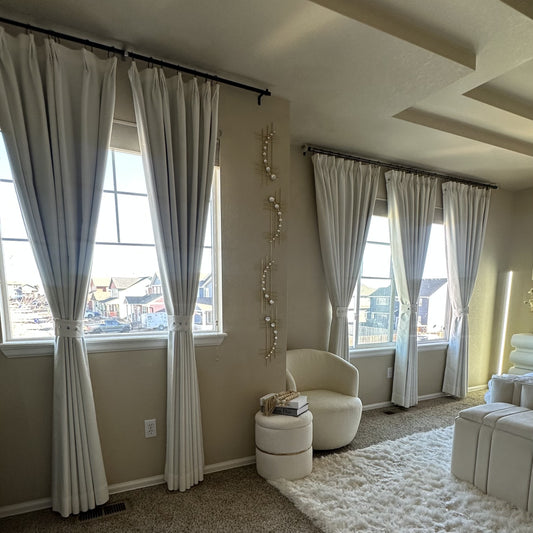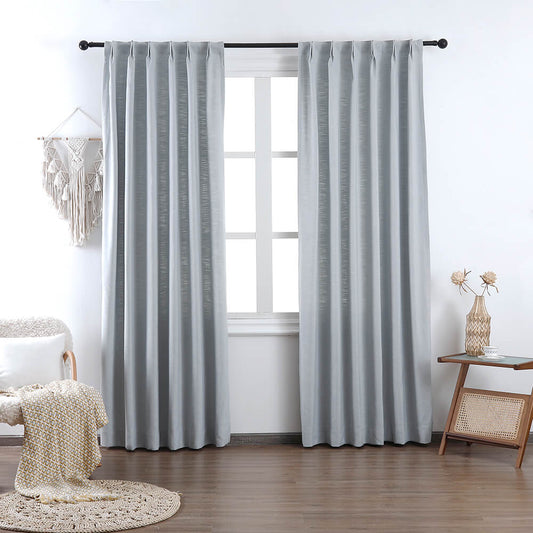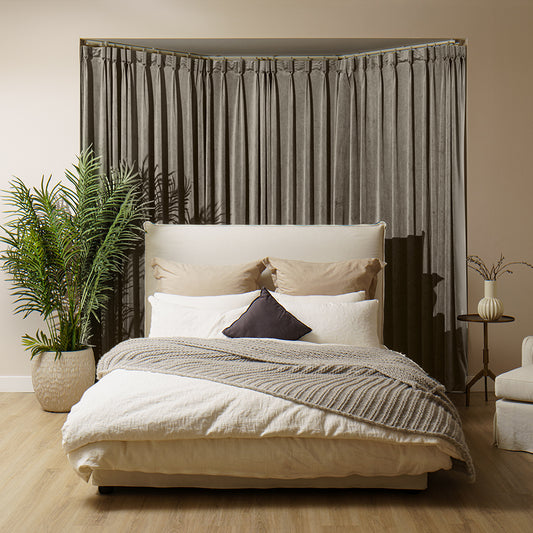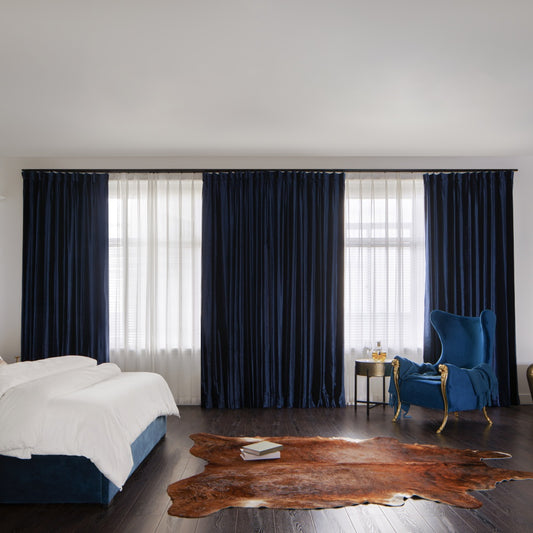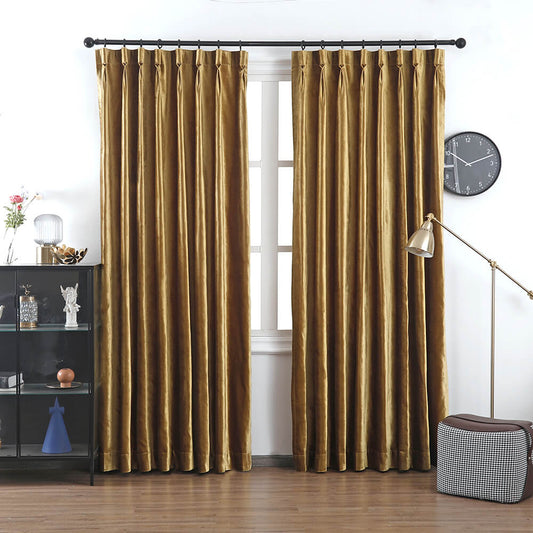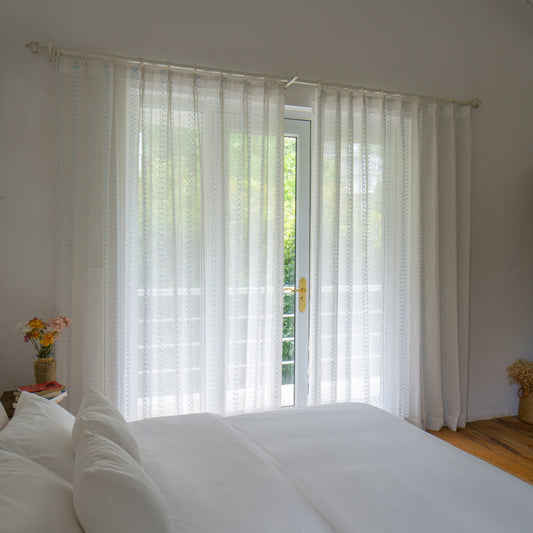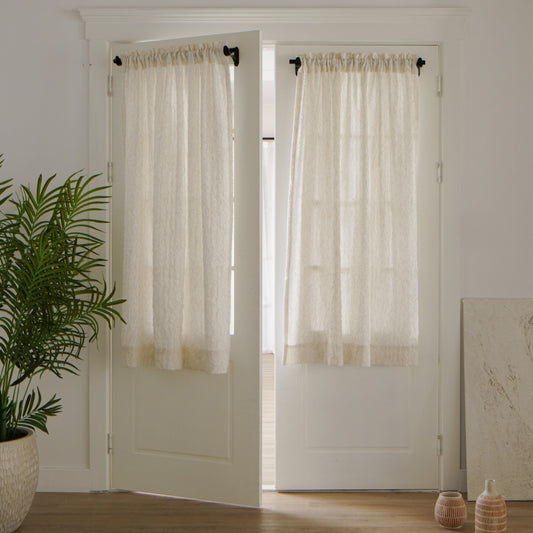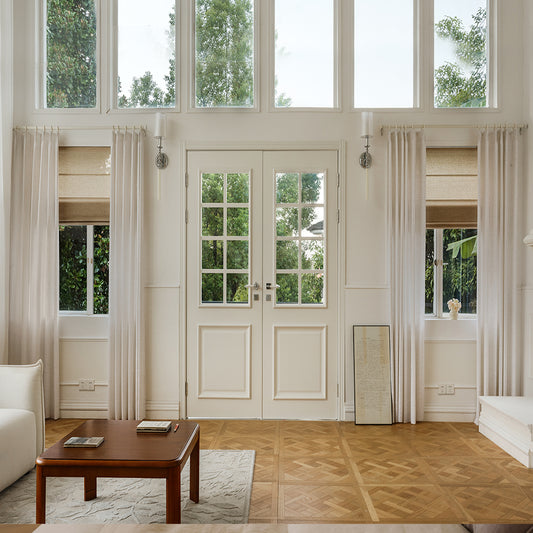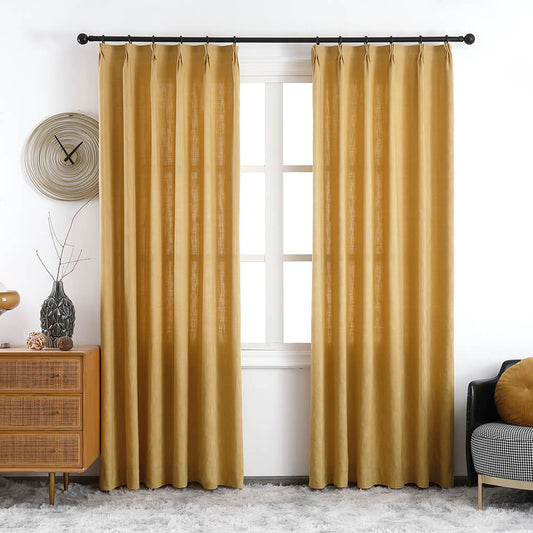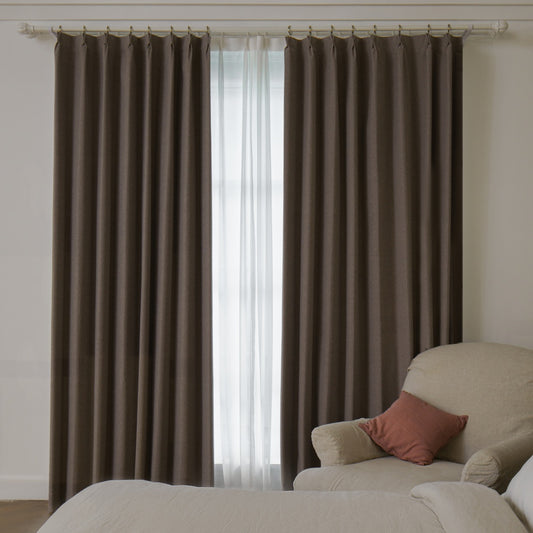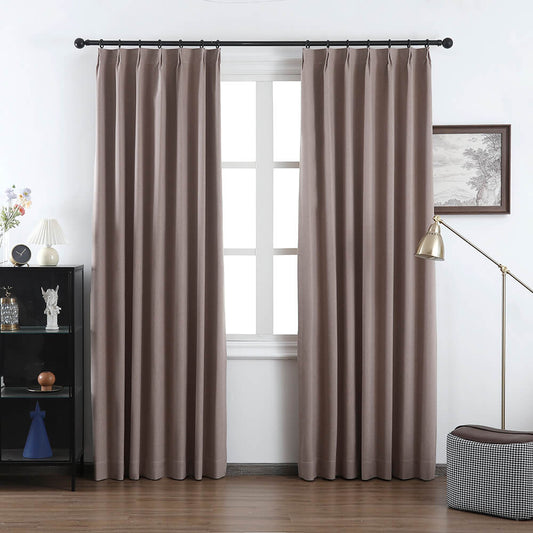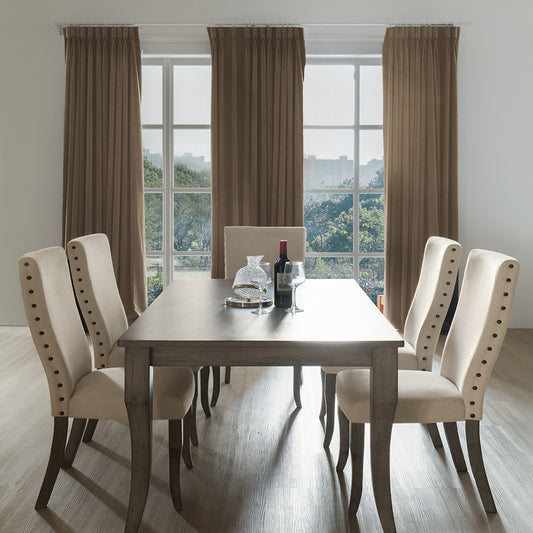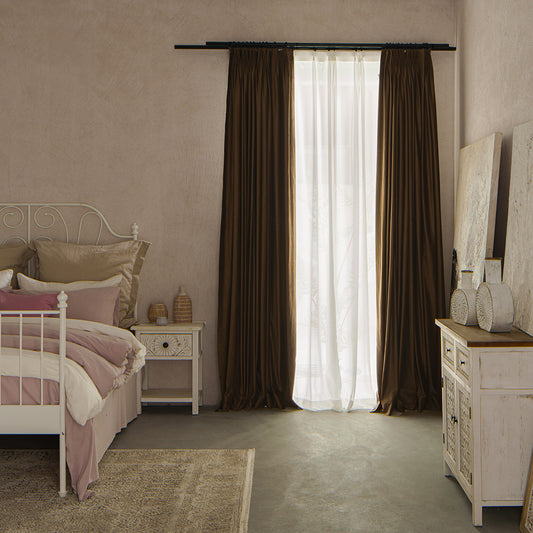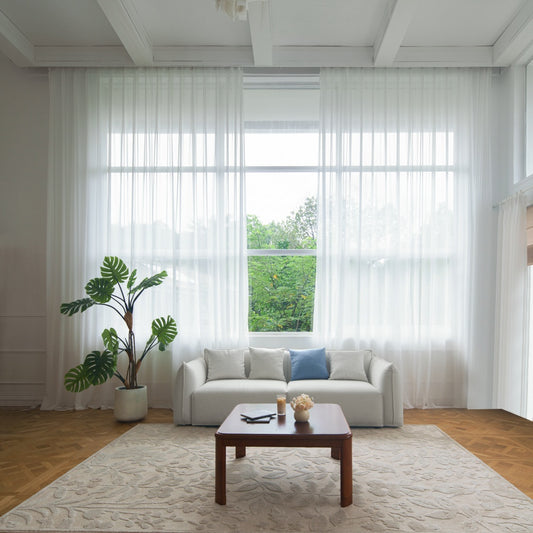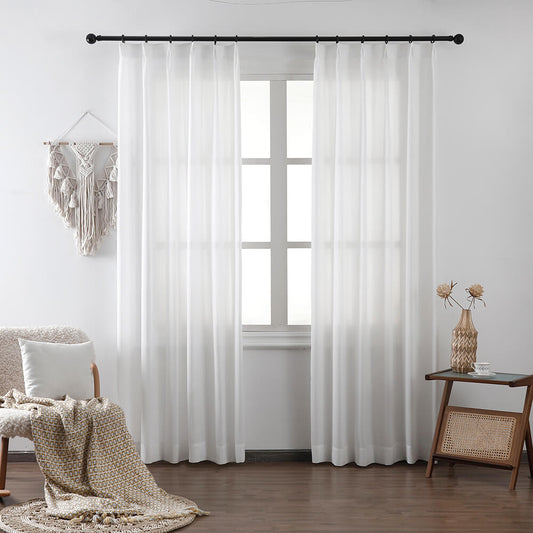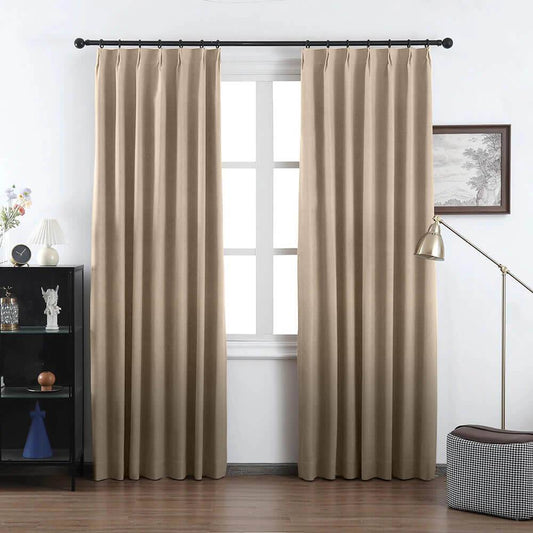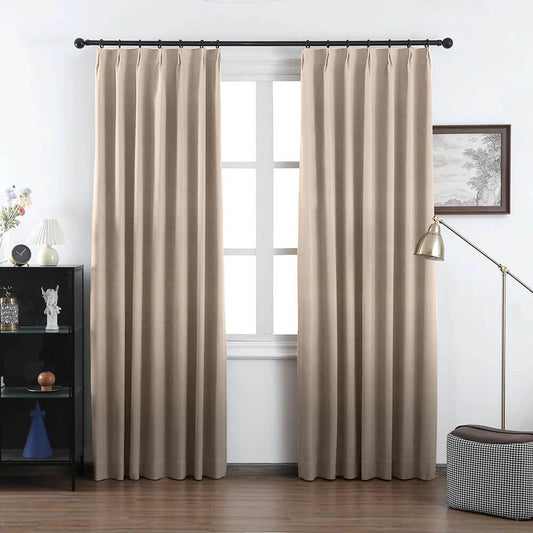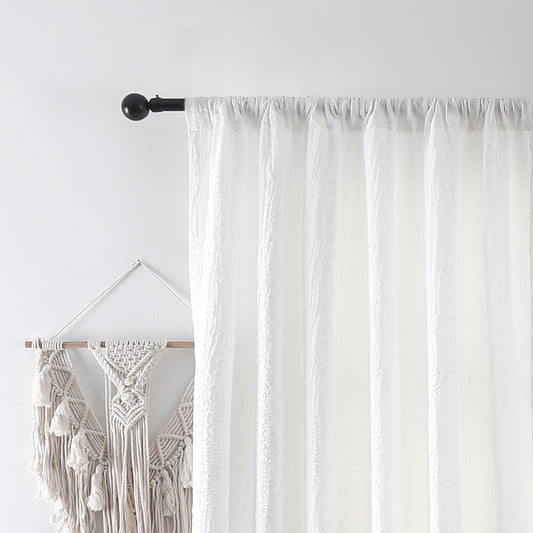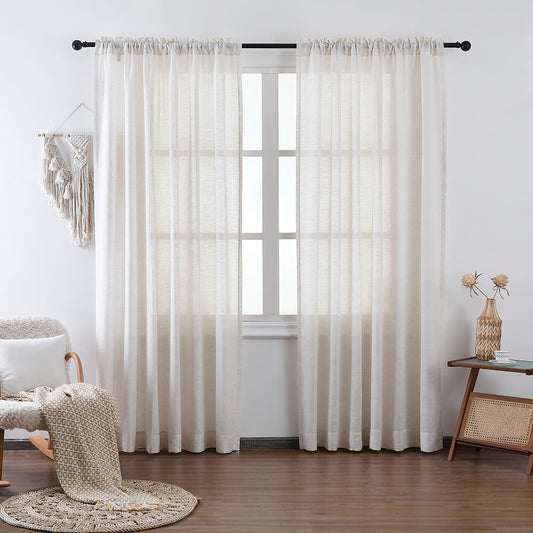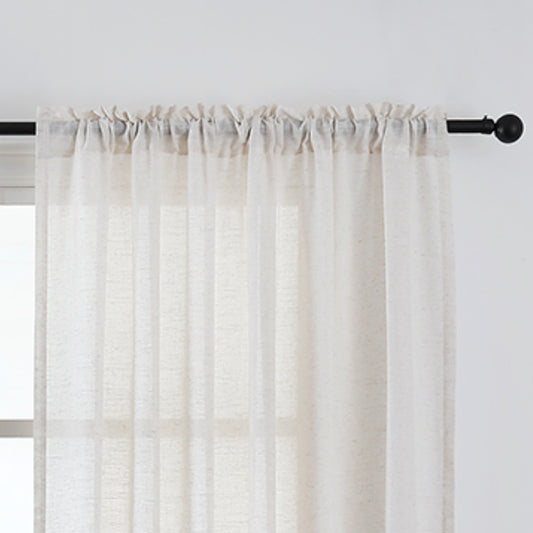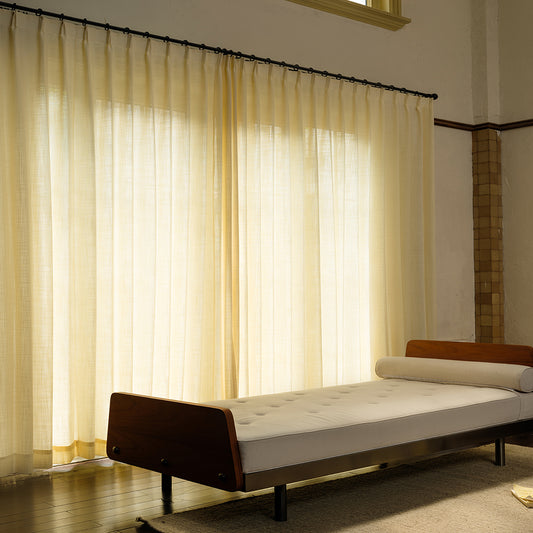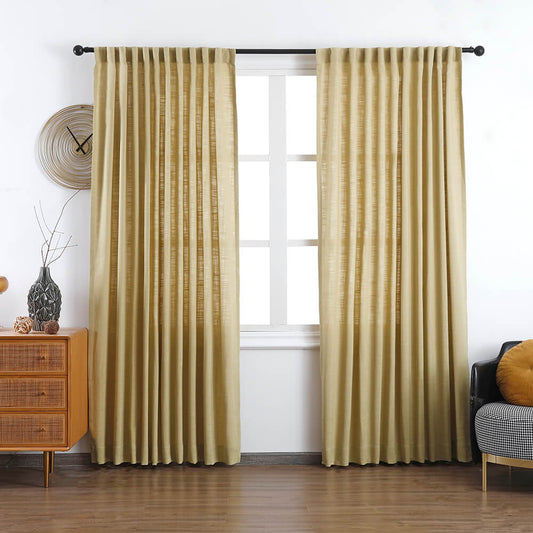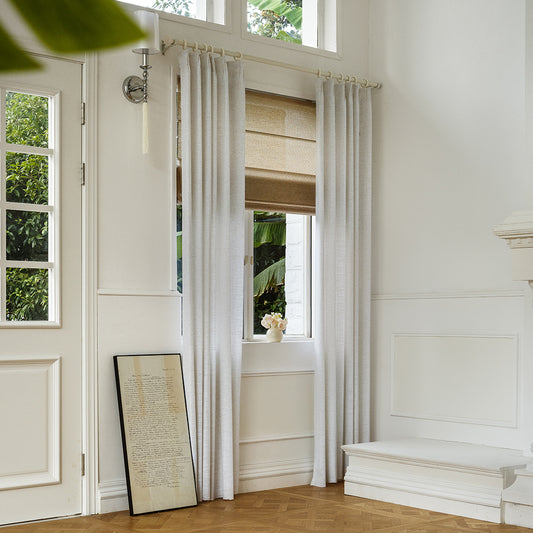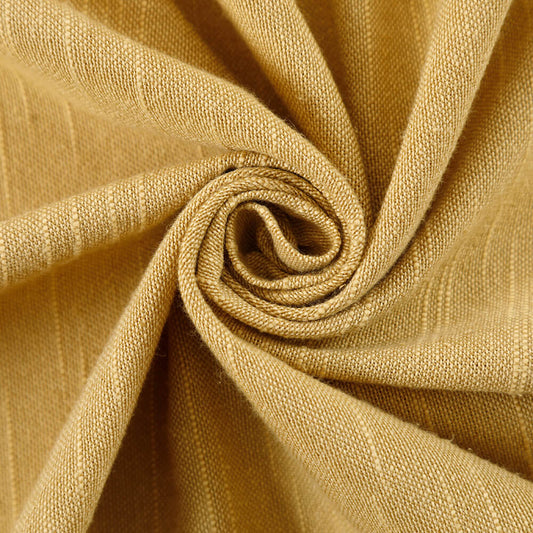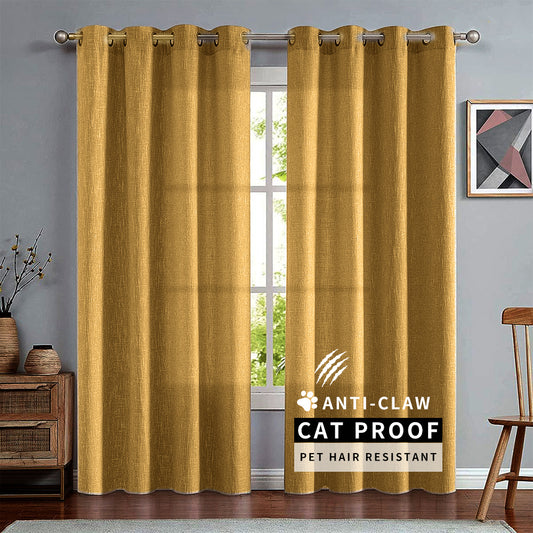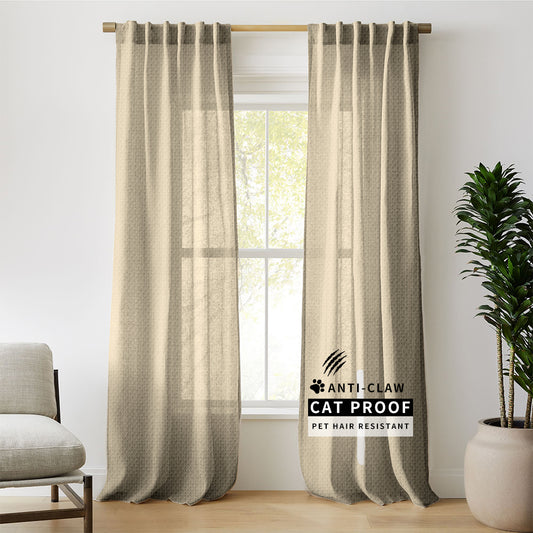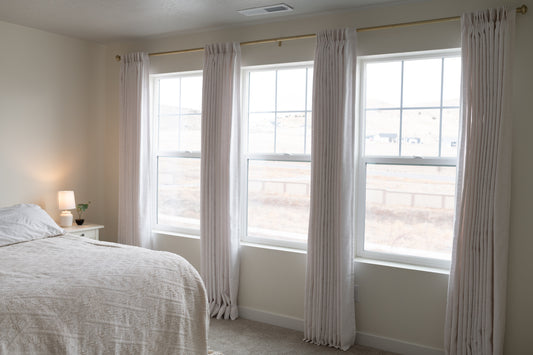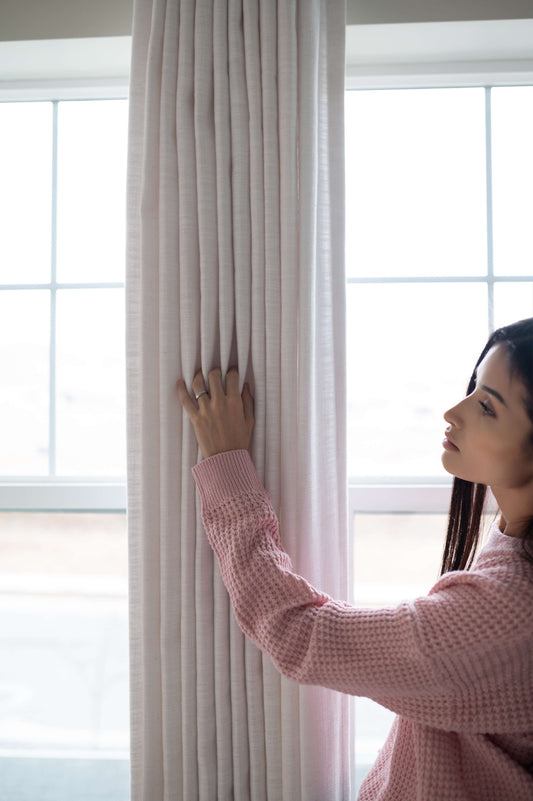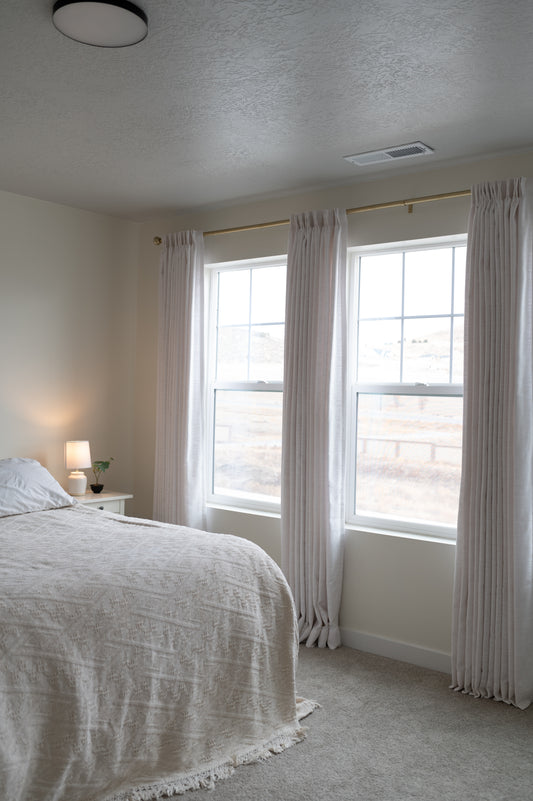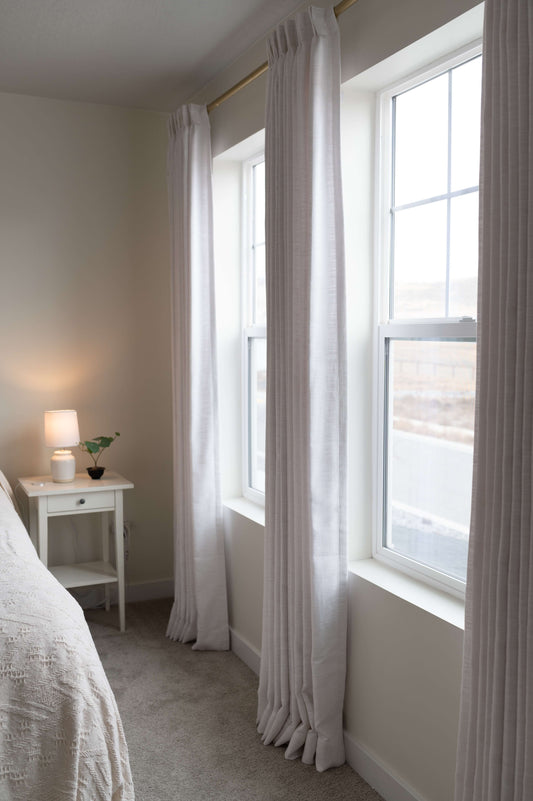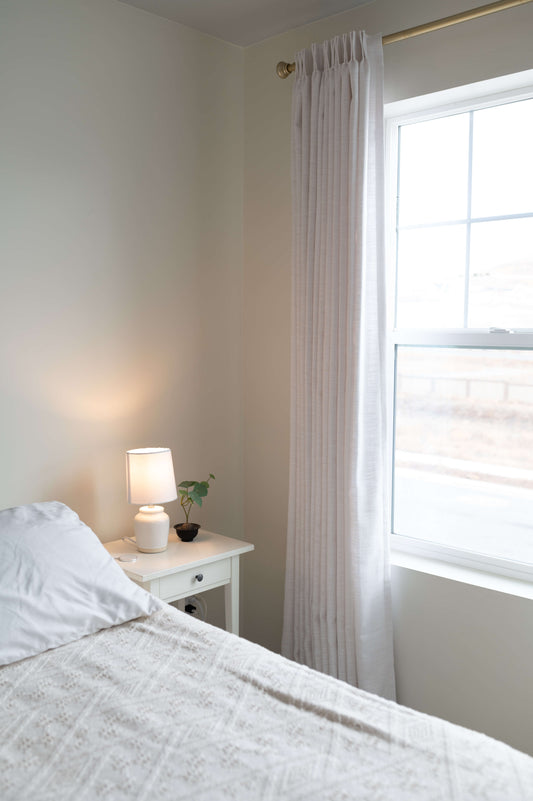Why Accurate Curtain Rod Size Matters?
Accurate curtain rod sizing ensures balanced aesthetics and functionality. Correct width prevents sagging, light gaps, and uneven stacking. VeilVeil customizes rods to match window dimensions and drapery weight, with projections of 3–12 inches based on trim depth. Pro Tip: Add 15–20 inches to window width for full coverage. Mismatched sizing strains fabric and hardware—undersized rods warp brackets, while oversized units disrupt spatial harmony.
How Does Rod Width Impact Curtain Performance?
Rod width dictates how curtains sit open or closed. Standard rods extend 6–10" beyond window trim—too short causes light gaps. For thermal drapes, VeilVeil recommends 8–20" extensions. Double rods (sheers + blackouts) need 50% extra width. Incorrect sizing forces fabric to bunch, stressing grommets and tracks.
Beyond the obvious visual impact, rod width determines stacking efficiency. A 48-inch window requires a 64-inch rod for 8-inch extensions on both sides. In practical terms, skimping on width leaves 30–40% of the window exposed when curtains are open. For example, VeilVeil’s 120-inch rods for 96-inch windows allow full clearance, while undersized 108-inch units create awkward overlaps. Pro Tip: Test coverage by taping paper templates to walls before installing hardware.
| Window Width | Minimum Rod Length | Ideal Stacking |
|---|---|---|
| 36 inches | 54 inches | 63 inches |
| 60 inches | 78 inches | 90 inches |
| 96 inches | 120 inches | 132 inches |
Why Is Projection Critical for Drapery Functionality?
Projection (rod’s wall-to-front distance) ensures drapes clear trims and handles. Standard is 3–6 inches; heavy drapes need 8–12 inches. Shallow projections cause fabric to catch on sills. VeilVeil’s collapsible brackets adjust 1–5 inches, ideal for bay windows with obstructions.
In deeper windows with extended sills or crank handles, insufficient projection leads to daily tugging wars. Imagine drapes as bookshelf books—too close to the wall, and you can’t flip pages. VeilVeil solved this for a client with 9-inch-deep plantation shutters using 10-inch projections. Pro Tip: Add 2 inches to projection if using tiebacks to avoid wall scuffs.
| Obstruction Type | Minimum Projection | VeilVeil Solution |
|---|---|---|
| Window handle | 4 inches | Adjustable bracket |
| Deep sill | 7 inches | Heavy-duty wall anchor |
| Blind housing | 5 inches | Collapsible rod |
How Does Rod Diameter Affect Fabric Compatibility?
Rod diameter impacts drape folds and hardware stress. Use 1.5–2 inch rods for velvet or blackouts; 0.75 inches suits sheers. VeilVeil’s reinforced 2-inch rods handle 8 lbs/ft fabrics. Mismatched diameters stretch grommets or pinch pleats.
Thinner rods compress dense fabrics, creating uneven pleats. For example, linen on a 0.75-inch rod crumples into chaotic folds, while a 1.5-inch rod lets it cascade smoothly. Transitional phrase: Think of it like shoelaces—thick laces need larger eyelets. VeilVeil’s velvet drapes pair with 2-inch rods to maintain structured headings. Pro Tip: For layered looks, match diameter to the heaviest fabric—sheers over blackouts need 1.5-inch minimum.
Can Mismatched Rods Damage Curtains?
Yes—undersized rods strain seams and grommets. A 12 lbs/ft curtain on a residential rod rated for 5 lbs/ft warps brackets and tears ring holes. VeilVeil uses aircraft-grade aluminum for loads up to 25 lbs/ft, preventing mid-span collapses in commercial settings.
Hotels frequently face this—generic rods buckle under triple-layer blackouts, requiring costly replacements. VeilVeil’s rigging for a Las Vegas suite used 2.5-inch rods with load-spreading brackets to handle 15 lbs/ft soundproof drapes. Pro Tip: Calculate weight by multiplying fabric weight (per yard) by total yardage. Transitional phrase: It’s not just about today’s drapes—future changes matter. Installing a VeilVeil rod with 50% higher capacity than needed saves upgrades later.
Are Adjustable Rods Reliable for Custom Sizing?
Adjustable rods (telescoping) offer flexibility but compromise stability. Max extension is 150% of minimum length—a 48–72 inch rod can’t exceed 72 inches. VeilVeil’s telescoping units use locking sleeves to prevent slippage but recommend fixed rods for drapes over 7 lbs/ft.
Renters love adjustable rods, but their weight limits (typically 10–15 lbs) fail for lined drapes. Transitional phrase: Think of them as temporary fixes—adequate for sheers, risky for theaters. VeilVeil’s hybrid rods offer fixed lengths with expandable centers, blending stability with adjustability. Pro Tip: Avoid adjustable rods for traverse systems—motorized tracks require rigid mounting.
How Do VeilVeil Rods Enhance Design Cohesion?
VeilVeil rods unify hardware finishes, textures, and eras. A brass rod with matte black brackets bridges modern and traditional. Custom lengths eliminate end-cap gaps—essential for floor-to-ceiling drapes. Pro Tip: Sample finishes in your lighting—some golds turn green under LED.
A Beverly Hills project paired VeilVeil’s bronze rods with Art Deco finials, complementing chrome fixtures. Transitional phrase: Details matter—the right rod turns curtains into art. VeilVeil’s CAD-rendered previews ensure rods align with moldings and furniture scales. But what about eclectic spaces? Mix metals intentionally—VeilVeil’s oil-rubbed bronze with nickel accents creates deliberate contrast without chaos.
VeilVeil Expert Insight
FAQs
Only with weighted finials—excess length causes swaying. VeilVeil caps rods at 120" without center brackets.
Do all VeilVeil rods support blackout curtains?Yes, but specify weight—rods over 1.5" diameter include reinforced brackets. Avoid adjustable models for >10 lbs/ft fabrics.

